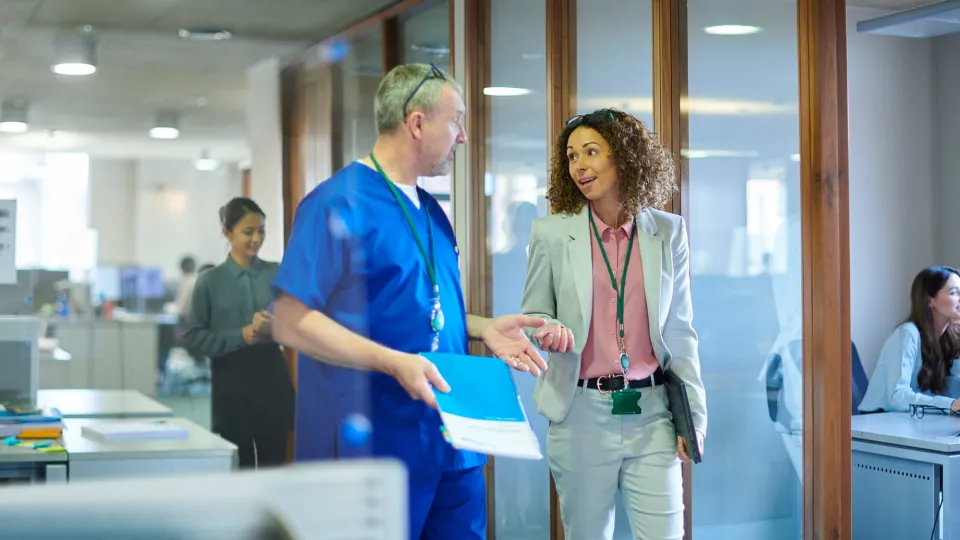The Future of Medical Administration: Trends and Technologies to View
The Future of Medical Administration: Trends and Technologies to View
Blog Article
Finest Practices in Medical Management for Improving Efficiency and Minimizing Expenses
In the ever-evolving landscape of medical care, the search of ideal practices in clinical management is paramount for enhancing performance and suppressing expenses. By incorporating advanced technologies such as electronic health and wellness documents and telemedicine, healthcare companies can simplify procedures and enhance person treatment.
Leveraging Advanced Modern Technology
The assimilation of electronic solutions into health care systems has actually transformed the method centers run, simplifying procedures and enhancing client care. By streamlining client details, EHRs remove the demand for difficult paperwork and assist in smooth interaction amongst health care carriers.
Telemedicine is another technological improvement that has reinvented individual interaction. It uses comfort for both individuals and healthcare professionals by allowing remote assessments, which can reduce the demand for in-person visits and optimize visit scheduling. Additionally, telehealth platforms can extend medical care access to rural or underserved locations, linking voids in care distribution.
Furthermore, making use of Expert system (AI) and maker understanding is becoming progressively widespread in anticipating analytics, permitting for early detection of prospective health concerns and even more educated decision-making. These technologies, when integrated efficiently, can improve diagnostic precision and individualize client treatment plans, ultimately causing boosted health care end results and operational effectiveness.
Optimizing Resource Allotment
Efficient resource allocation is essential for making the most of the effectiveness of medical administration. By tactically taking care of sources such as employees, equipment, and finances, medical care centers can substantially enhance their functional efficiency, improve patient outcomes, and decrease unnecessary expenditures. The primary step in maximizing source allotment includes conducting a comprehensive evaluation of present assets and identifying areas where resources might be underutilized or exhausted. This assessment must be data-driven, making use of metrics and analytics to notify decision-making procedures.
Focusing on source allowance based on patient requirements and service needs is vital. This involves lining up resources with high-demand areas, such as emergency care or specialized treatments, to ensure timely and reliable patient treatment. Carrying out flexible staffing versions can also optimize labor sources by adjusting employees allotment in response to rising and fall patient quantities. Additionally, embracing telemedicine and other technical services can reduce physical resource constraints by supplying alternate opportunities for patient-provider communications.
Funds need to be meticulously kept an eye on and designated with strategic foresight to support both short-term operational demands and lasting institutional objectives. This consists of investing in training programs that improve staff expertises and embracing energy-efficient methods that decrease operational expenses (medical administration). Ultimately, an optimized source allowance approach promotes a lasting health care environment that is responsive, effective, and economically sensible
Streamlining Operations Processes
When healthcare facilities aim to improve functional efficiency, streamlining operations processes ends up look at this web-site being a pivotal focus. Effective process lessen redundancy, get rid of unneeded actions, and boost coordination amongst health care specialists. This method not only increases service shipment but additionally improves the high quality of person treatment.

Next, technology combination plays a substantial function in enhancing operations. Executing electronic wellness documents (EHRs) and digital physician order entrance (CPOE) systems minimizes documents, reduces human error, and makes certain information comes to all appropriate personnel. Additionally, leveraging telemedicine platforms can enhance individual appointments and follow-ups, minimizing the strain on physical facilities.

Eventually, streamlined operations lead to set you back decreases and improved individual contentment, cultivating a much more lasting health care setting.
Enhancing Information Monitoring
Building upon structured process, maximizing data management ends up being a crucial element in progressing healthcare administration. Effective information monitoring systems are vital for maintaining precise client records, boosting decision-making, and ensuring compliance with regulative standards. By implementing durable data management services, health care facilities can improve the top quality of individual care while all at once minimizing operational costs.
One trick facet of enhancing information monitoring is the integration of advanced electronic health document (EHR) systems. These systems facilitate the seamless exchange of individual information throughout different divisions, decreasing replication of examinations and decreasing mistakes. A properly designed EHR system supports data analytics, enabling doctor to recognize trends and make educated decisions pertaining to individual care.
Additionally, protecting patient data is extremely important. Embracing thorough cybersecurity procedures, consisting of encryption and regular audits, makes sure the honesty and discretion of delicate info. This not just shields individuals but additionally preserves the institution's track record.
Buying team training is an additional vital aspect. Educating medical care experts on data administration practices boosts their capacity to successfully utilize modern technology, bring about enhanced client results. Finally, improving information monitoring with sophisticated modern technology and extensive training is important for accomplishing efficiency and price decrease in clinical management.
Fostering Collaborative Communication
A critical component ahead of time clinical administration is fostering joint interaction among health care visit here professionals. Efficient communication is paramount for guaranteeing smooth individual care, optimizing therapy outcomes, and lessening errors. By encouraging open dialogue and sychronisation across multidisciplinary teams, healthcare organizations can enhance their operational effectiveness and reduce unnecessary prices.
Central to this technique is the combination of interaction innovations such as electronic health and wellness documents (EHRs) and safe messaging platforms, which facilitate the fast exchange of crucial person info. These tools enable health care carriers to accessibility and share information in real time, guaranteeing that all employee are educated and aligned in their decision-making processes. Furthermore, normal team conferences and interdisciplinary rounds can additionally promote a culture of collaboration and liability.
Educating programs concentrated on enhancing interaction skills are additionally vital. Ultimately, promoting collective interaction leads to like this improved healthcare distribution and expense financial savings.

Final Thought
Integrating advanced innovation, such as digital health documents and telemedicine, together with optimized resource allowance and structured process procedures, is vital for improving performance in medical management. Efficient information monitoring and cultivating collaborative interaction amongst health care groups are essential for decreasing redundancies and boosting care top quality. By prioritizing precautionary care and involving in top quality enhancement initiatives, healthcare companies can achieve significant price financial savings and boosted patient results, thereby guaranteeing lasting health care distribution in a significantly complicated setting.
Report this page